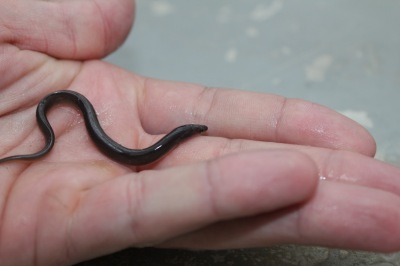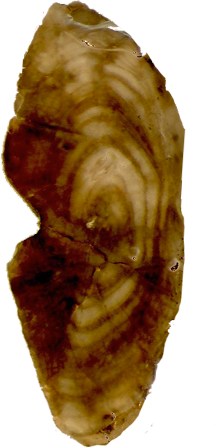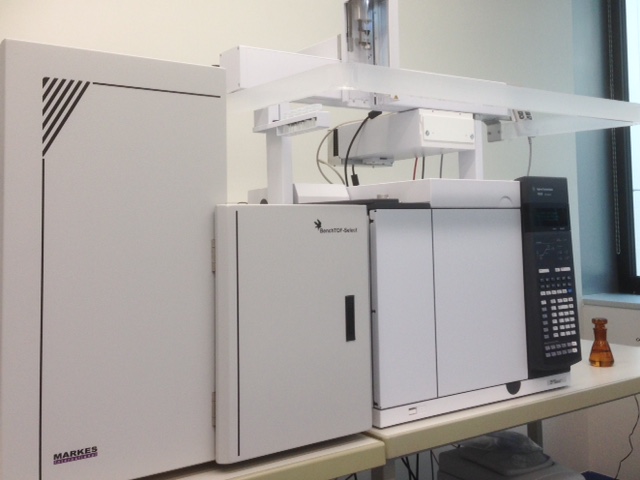Project
DCF-Aal: As you sow, so you shall reap - habitat related secondary influences on Eels

Studies concerning the influence of habitat-specific harms on the biology & spawner quality of the European Eel in German inland waters.
In view of the dramatic decline of the recruitment of glass eels since the beginning of the 1980s and the resulting critical endangerment of the European Eel, there is still a lack of knowledge about the causes of this alarming trend. Besides fisheries, a number of additional influencing factors are currently discussed in the scientific community.
Background and Objective
Among the possible threats for the stock of the European Eel are factors such as climatic effects, degradation of its natural habitat, invasive parasites, bacterial and virological diseases as well as contamination of the inland waterbodies due to pollutants. Living conditions are greatly influenced by these factors and therfore the quality of the respective habitat may differ significantly throughout Germany.
The Thünen Institute of Fisheries Ecology is leading a number of cooperations with national and international research institutions, conducting studies on the influence of certain pollutants and parasites on the biology and stock status of the eel in German and international inland- and coastal waters. Our ambition is to to gain a better understanding of the involved physiological processes and possible effects for the fish during their continental life in our waters.
Results are meant to allow for an evaluation of habitats for eels in terms of stocking-recommendations which may hopefully lead to a better German stock-management in the future.
Approach
Following the demands of the European Datacollection Framework DCF we collect conventional (fisheries-)biological data such as length, mass, age and maturation of yellow- and silver eels from all natural inhabited German waterbodies. There hereby accumulated data is processed and then provided to international expert groups, that work with these data for a better understanding of the international stock status of the european eel.
Besides these standard-parameters, we are involved in collaborations with a number of partners to learn more about the influential factors of pollution, parasitation and diseases to gain a better understanding between habitats and quality of spawners.
Results
So far published results of our studies give an insight on the influencing factors of contaminants and parasites on the health status and development of eels in the respective water system. One of our studies revealed consistent infestation rates between 65 and 83% in inland waters in northern Germany. Nevertheless, this study also found out that for example in the rivers Elbe and Ems there is a significant decline in the intensity of infestation (adult parasites per swimmbladder). This could indicate a positive trend in this context.
Another study determined different strategies in the habitat-selection of eels by using micro-chemical analyses of the inner-ear organs (otoliths) of the fish. Here we found out, that fish staying exclusively in coastal waters turned out to have lower parasitical infestation rates and a general better condition due to higher body fat content than fish that exclusively lived in freshwater-habitats. Consequences deriving from different habitats are also in the focus of a number of other studies dealing with organic pollutants, that we are involved in. A study dealing with the metabolites of polyaromatic cyclic Hydrocarbons led to findings about the connection between bile coloring and life-history stages of investigated eels.
A number of other studies on the exposure of yellow and silver eels to various pollutants, such as metals (e.g. Hg, CD, PB), halogenated persistent organic pollutants (PCBs, dioxins, flame retardants) and insecticides (e.g. fipronil), led to similar findings. In these studies it became clear that presence and concentration of accumulated pollutants strongly depended on the habitat of the sampled fish and that these pollutants were partly accumulated in significant concentrations also in the gonads (eggs / ovaries) of female silver eels. As this may possibly lead to a reduction in the reproductive capacity of fish from certain areas, these findings should be considered in management approaches, such as stocking recommendations or restrictions of such.
Involved Thünen-Partners
- Hanel, ReinholdFI Institute of Fisheries Ecology
- Kammann, Ulrike FI Institute of Fisheries Ecology
- Marohn, LasseFI Institute of Fisheries Ecology
- Poell, AlexandraFI Institute of Fisheries Ecology
- Poell, AlexandraFI Institute of Fisheries Ecology
- Pohlmann, Jan-DagFI Institute of Fisheries Ecology
- Wysujack, Klaus FI Institute of Fisheries Ecology
Duration
3.2009 - 12.2027
More Information
Project status:
finished
Publications
- 0
Freese M (2020) The role of chemical pollution in the continental life of the European Eel (Anguilla anguilla L.). Kiel: Univ Kiel, 218 p, Kiel, Univ, Diss
- 1
Ensing D, Maxwell H, Walker A, Romakkaniemi A, Briand C, Evans D, de Eyto E, Erkinaro J, Pohlmann J-D, Dannewitz J, Höjesjör J, Mills K, Saunders M, Freese M, Kesler M, Velterop R, Poole R, Palm S, Pakarinen T (2020) Working Group on Science to Support Conservation, Restoration and Management of Diadromous Species (WGDIAD; outputs from 2020 meeting). Copenhagen: ICES, 42 p, ICES Bus Rep 1(3), DOI:10.17895/ices.pub.7693
- 2
Freese M, Yokota Rizzo L, Pohlmann J-D, Marohn L, Witten PE, Gremse F, Rütten S, Güvener N, Michael S, Wysujack K, Lammers T, Kiessling F, Hollert H, Hanel R, Brinkmann M (2019) Bone resorption and body reorganization during maturation induce maternal transfer of toxic metals in anguillid eels. Proc Nat Acad Sci USA 116(23):11339-11344, DOI:10.1073/pnas.1817738116
- 3
Pohlmann J-D, Freese M, Reiser S, Hanel R (2019) Evaluation of lethal and non-lethal assessment methods of muscle fat content in European eel (Anguilla anguilla). Can J Fish Aquat Sci 76(4):569-575
- 4
Hohenadler MAA, Nachev M, Freese M, Pohlmann J-D, Hanel R, Sures B (2019) How Ponto-Caspian invaders affect local parasite communities of native fish. Parasitol Res 118(9):2543–2555, DOI:10.1007/s00436-019-06399-3

![[Translate to English:] [Translate to English:]](/media/_processed_/2/9/csm_Embryo-Exp_Gelege_9F_dpf5-200513111619_c8534a8199.jpg)
![[Translate to English:] [Translate to English:]](/media/_processed_/2/9/csm_Embryo-Exp_Gelege_9F_dpf5-200513111619_9027994d44.jpg)














